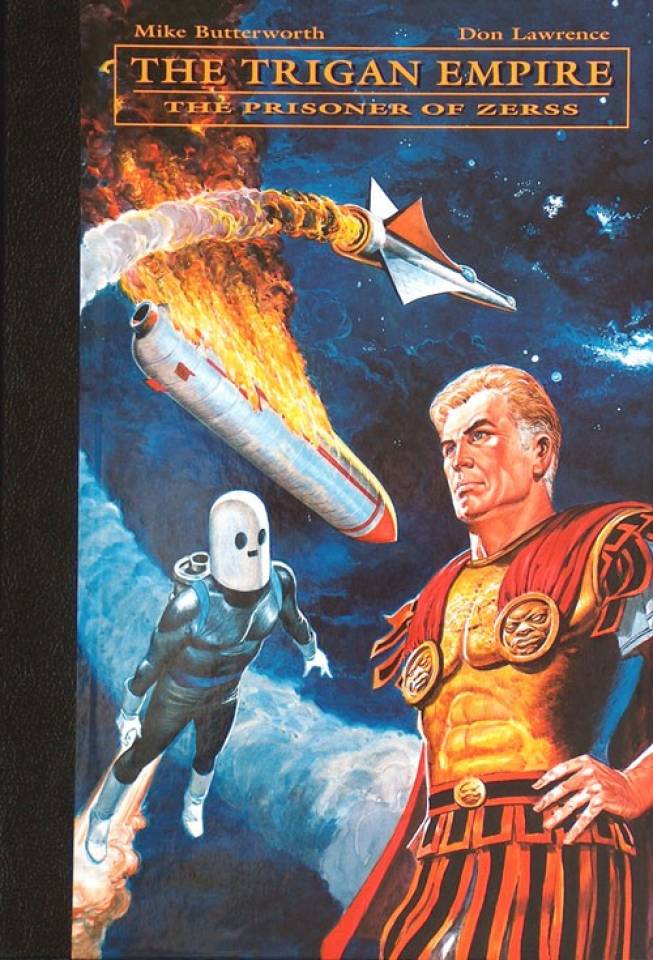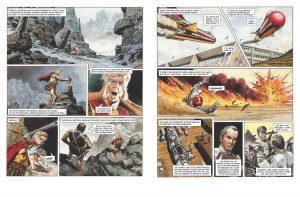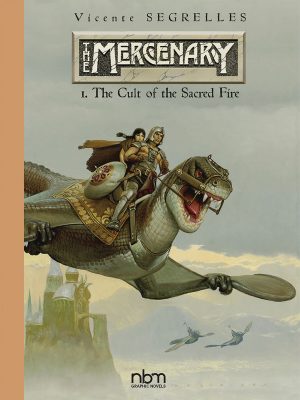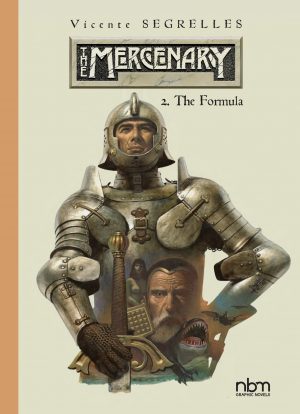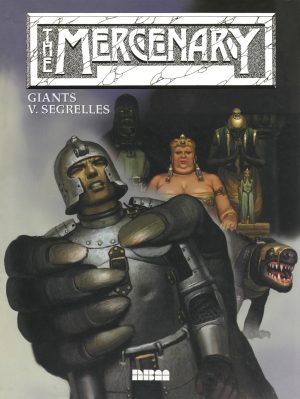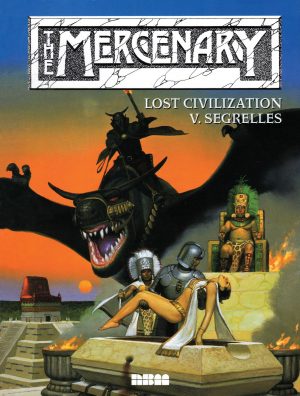Review by Frank Plowright
After the comparative brevity of The Rallu Invasion, The Prisoner of Zerss restores the story page count to 80, and it opens with an intriguing mystery as a bunch of raiders wearing the distinctive helmets seen on the cover carry out several audacious robberies. These are on a grand scale, and the Trigan authorities are completely at a loss to discover the perpetrators. Janno is incapacitated early, and this is the first time for several volumes that we’ve seen his mates Keren and Roffa.
It’s a clever plot from Mike Butterworth, incorporating nods to Hammer horror films, some darkly funny moments and some genuine tension revealing Emperor Trigo’s single-mindedness. The ending will be polarising. According to your view it will either be a cheap cop-out or a perfectly acceptable device. What’s not up for dispute is the atmospheric wonder of Don Lawrence’s pages as he slips between the wonders of science and earlier times, with the simplicity of the raiders’ helmets memorable.
So are the characters he introduces for the title story. It’s contrived as scientist Peric is again compromised, and instead of trusting the people around him, he gives in to blackmail, and logical behaviour is at a premium throughout. Butterworth’s villain is arch, and when revealed, the reason for his spectacular success is disappointing also, despite being a philosophical statement. In every Trigan Empire collection there seems to be one story in which less time has been allocated to tightening the plot, and this is another, accompanied by a not very credible ending. Still, there is more great art from Lawrence.
‘The Miniature Killers of Zelph’ is Butterworth’s 1972 twisting of long-running British comic series General Jumbo, in which a child controls a remarkable miniature army via remote control. Here the child is a King, and the army is controlled by his ambitious regent. It’s a tense thriller, with the deadly small robots ingeniously used.
There’s no messing about with the introductory pages of ‘The Wish-Fufiller’ as Butterworth jumps straight into a population rioting due to lack of food and the destruction of the imperial palace. It’s artistically interesting beyond the usual for the contrast between ordinary Trigan citizens in clothing that might be seen on London’s streets in the early 1970s and the Roman style clothing of Brag and Janno, the Emperor’s brother and nephew. It’s a story with greater depth than first appears, as while it ultimately depends on the realisation of individual fantasies, it’s grounded in political realities, and allegorically refers to the beginnings of the UK’s addictive drug culture.
As ever, no matter how creative the stories are, it’s Lawrence’s art that sustains a fan following, and there’s no let down with multiple pages of painted glory.
Readers may notice a gap between the original publication of the final two stories. This is because ‘Doran the Hypnotist’ appeared between them, but isn’t represented here as it wasn’t drawn by Lawrence, but by Miguel Quesada. Anyone wanting the complete continuity can find it along with all these stories in the thicker, but smaller sized paperback, The Rise and Fall of the Trigan Empire Vol. III. It also includes stories from the following The Curse of King Yutta.
